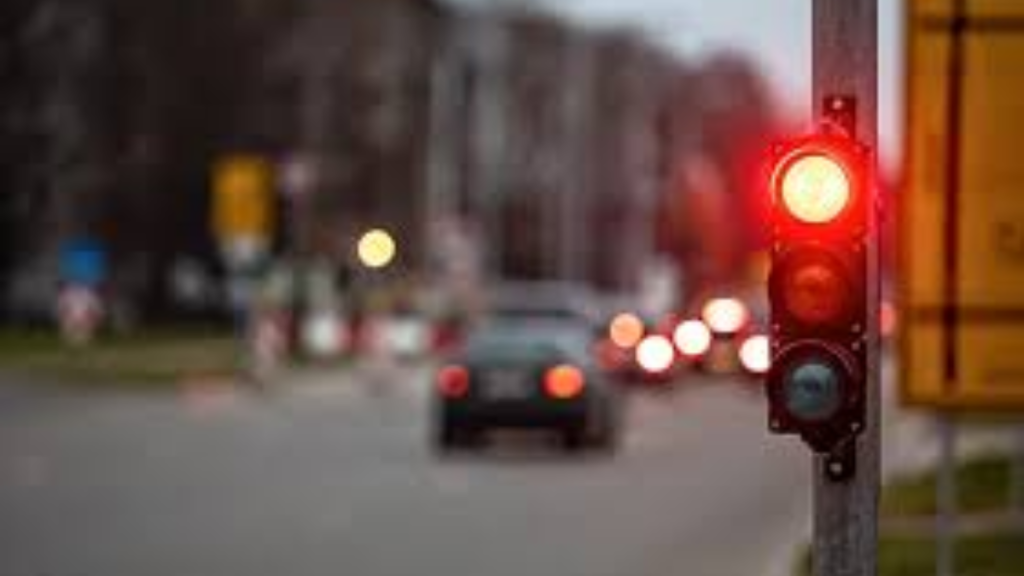San Francisco, CA — As part of its ambitious Vision Zero initiative, San Francisco will implement a ban on right turns at red lights at 200 intersections across key downtown neighborhoods. The goal: to reduce pedestrian and cyclist injuries in areas with high foot traffic and a record of serious traffic collisions.
The move, unanimously approved by the San Francisco Municipal Transportation Agency (SFMTA) Board of Directors, marks one of the largest expansions of pedestrian safety measures in the city’s recent history.
The new rule will take effect starting August 2024 and will be rolled out in phases through the summer of 2025.
Neighborhoods Targeted by the New Rule
The ban will apply to intersections located in five dense and high-traffic neighborhoods: South of Market (SoMa), Union Square, Chinatown, North Beach, and the Financial District.
These locations have been identified as part of San Francisco’s “High Injury Network,” a mapping of streets where 75% of severe traffic injuries and fatalities have occurred.
“These are places where people walk to work, shop, and eat. It’s where tourists and residents alike move on foot,” said Jeffrey Tumlin, Director of Transportation at SFMTA.
“Prohibiting right turns on red in these areas is a proven step to increase visibility, decrease vehicle-pedestrian conflicts, and save lives.”
Learning from the Tenderloin
The new plan draws on the city’s successful 2021 pilot project in the Tenderloin neighborhood, where right turns on red were banned at 54 intersections. According to city data, the pilot led to a 70% reduction in vehicles encroaching on pedestrian crosswalks and improved compliance with traffic signals.
“Drivers became more predictable, and pedestrians felt safer,” said Tumlin. “That evidence gave us the confidence to scale the program citywide.”
The Tenderloin’s success also gained support from advocacy groups like Walk San Francisco, who pushed for broader implementation.
How the Ban Will Be Rolled Out
The project will begin with the installation of “No Turn on Red” signs at priority intersections, with a focus on the most dangerous locations first. Full implementation is expected by the end of August 2025.
“We’ll be phasing it in neighborhood by neighborhood to ensure drivers can adapt to the changes,” said Tumlin.
All affected intersections will receive clear signage to inform motorists of the new restrictions. SFMTA is also working on an outreach campaign to educate drivers and raise public awareness.

Balancing Safety and Traffic Flow
While the measure has been met with broad support from safety advocates and many residents, some have raised concerns about potential traffic delays and congestion.
“This policy might slow down traffic during peak hours,” said Marcus Reed, a daily commuter from Oakland. “But if it makes the streets safer for everyone, I can get behind it.”
SFMTA acknowledged that traffic flow could be affected, especially during the early stages of implementation. However, officials emphasized that the safety of pedestrians and cyclists is the city’s top priority.
“Preventing fatalities and serious injuries has to come first,” said Tumlin. “The data shows that these turns contribute significantly to crashes involving people walking and biking.”
Enforcement Strategy and Education
The city does not plan widespread ticketing enforcement for the new rule. Instead, SFMTA will focus on driver education and behavior monitoring. Traffic cameras at select intersections will help track compliance, and data will be used to fine-tune the implementation.
The San Francisco Police Department, which faces staffing shortages, will offer limited support. Enforcement will mostly rely on signage and automated monitoring, along with occasional spot checks.
A National Shift Toward Safety
San Francisco’s ban reflects a growing trend among U.S. cities. Washington, D.C., New York City, and Seattle have all implemented similar restrictions in pedestrian-heavy areas.
These changes are driven by nationwide efforts to reduce traffic fatalities, which have remained stubbornly high even as vehicle technology has improved.
Mayor London Breed praised the policy, calling it “a smart and compassionate move.” She added, “In a dense city like San Francisco, where walking is part of everyday life, we must design streets that protect people first.”
What This Means for Drivers and Pedestrians
The upcoming changes mean drivers should expect to stop and wait for green lights at more intersections before turning right. Motorists are encouraged to remain alert and anticipate new signage as the rule rolls out.
For pedestrians and cyclists, city officials hope the new restrictions will lead to more predictable vehicle behavior, fewer near misses, and safer crossings.
“Every step we take to slow down traffic where people walk is a step toward fewer injuries and more livable streets,” said Jodie Medeiros, executive director of Walk San Francisco.
Conclusion
San Francisco’s decision to ban right turns on red at 200 downtown intersections represents a pivotal moment in the city’s commitment to traffic safety. Backed by data from earlier pilots and supported by public health and urban planning experts, the policy is expected to significantly reduce pedestrian-related crashes.
As the city embarks on this next phase of its Vision Zero strategy, residents, drivers, and visitors are encouraged to familiarize themselves with the upcoming changes and adjust their habits to support safer streets for all.
For more information, visit the official SFMTA project page:
Disclaimer – Our team has carefully fact-checked this article to make sure it’s accurate and free from any misinformation. We’re dedicated to keeping our content honest and reliable for our readers.
